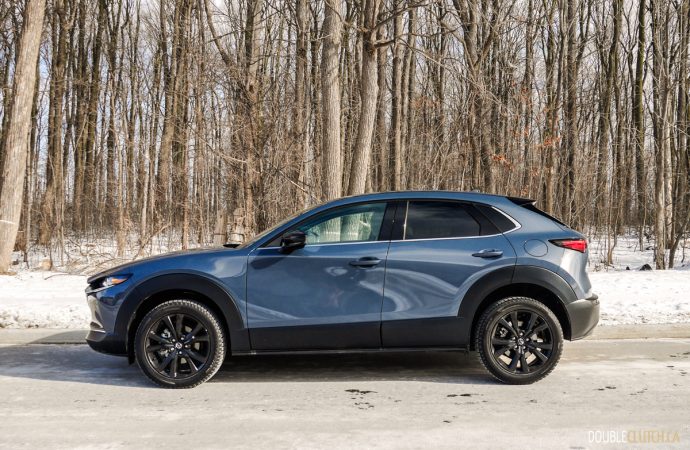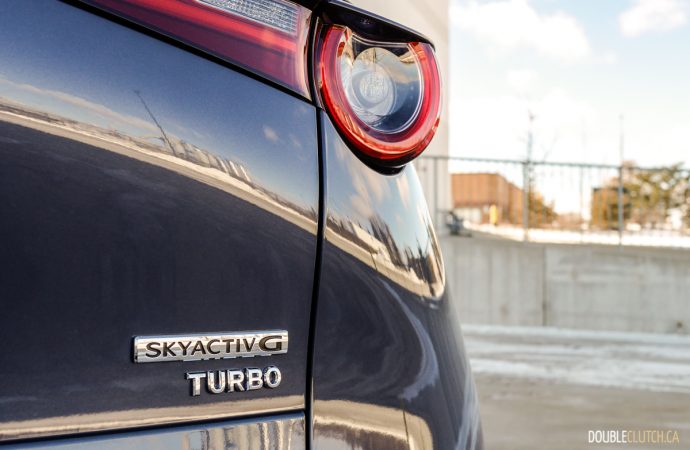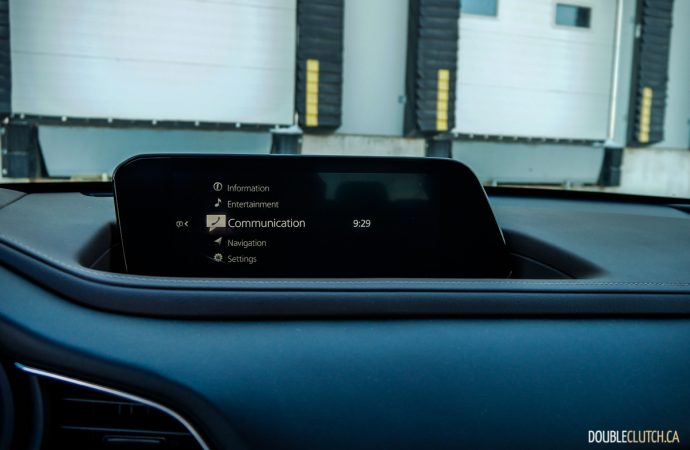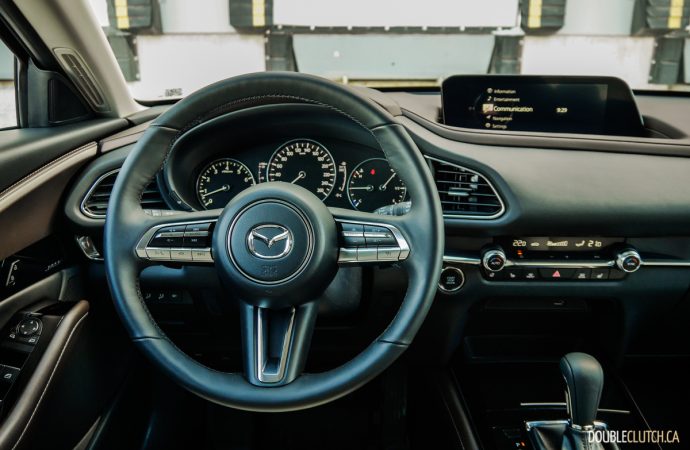Over the past decade, Mazda has made great effort to elevate their brand image to attract more mature buyers looking for a premium product when compared to entry-level luxury vehicles. Drawing a page out of Lexus and Acura’s recipe book, their latest attempt is to pair a punchy turbocharged engine with a capable all-wheel drive system into several beautifully crafted compact packages. We drove the Mazda3 Turbo and came away impressed, and now were handed the keys to the 2021 Mazda CX-30 Turbo to see if it can make an impact in the popular subcompact crossover segment.
Slotted between the CX-3 and the CX-5, the CX-30 features an attractive design that follows Mazda’s Kodo ‘Soul of Motion’ design just like the rest of their lineup. Its styling is best described as a raised Mazda3 Sport which is not a bad thing, and we would argue that the CX-30’s taller ride height better suits the exterior design. The CX-30 Turbo gains larger exhaust tips, black exterior mirrors and black wheels for added contrast and sportiness.
The most noteworthy feature is the 2.5-litre turbocharged SKYACTIV-G engine shared with many other vehicles including the Mazda3, Mazda6, CX-5, and CX-9. With 250 horsepower and 320 lb-ft. of torque on 93-octane premium fuel (227-hp/310-tq on regular fuel), the CX-30 Turbo has a significant power advantage over its competition. There are simply no mainstream subcompact crossovers that can come close to the CX-30 Turbo’s output, and it even manages to trump many entry-level luxury crossovers such as the BMW X1 xDrive28i and Mercedes-Benz GLA 250.
Driving in the city, the CX-30 Turbo feels powerful with almost no turbo lag. Its effortless power comes with refinement and the six-speed automatic transmission is good at delivering power to all four wheels through Mazda’s all-wheel drive system. The CX-30 Turbo’s power delivery is not to be mistaken with that of hot hatchbacks such as the Hyundai Veloster N, as it trades sheer exhilaration for linearity, as well as a tendency to run out of breath quicker than those dedicated track toys.
As sweet as this engine is, it is the handling that truly makes the CX-30 experience worthwhile. Steering is direct and there is real road feel and progressive weight felt. The standard G-Vectoring Control Plus (GVC-Plus) uses braking to help improve control and allow for more predictable steering, and we observed a level of stability that is not dissimilar to entry-level premium sedans. Mazda’s emphasis on driving engagement is on full display with the CX-30, and it is a great companion no matter the commute.
Mazda estimates that the CX-30 Turbo can achieve a fuel economy rating of 10.5L/100km in the city and 7.9L/100km on the highway. Our observed fuel efficiency was around 10.0L/100km in mixed environments, but in below freezing temperature. Fuel tank capacity is just 48-litres and while regular grade gasoline can be accepted, you must use 93-octane gasoline to achieve the full power and torque output.
The fun suspension tuning does come at a bit of a cost to ride comfort which is on the firm end of the spectrum. The good part is that the CX-30 Turbo does not feel harsh and we are perfect happy with the tradeoff for better driving dynamics. We observed good head and legroom up front, but the rear seats are compromised due to the overall small size and the raked roofline. The CX-30 Turbo has a rated cargo capacity of 572 litres behind the second row.
Interior design is another element of the Mazda CX-30 Turbo that can give many premium crossovers a run for their money. The simplistic layout feels upscale with minimal hard plastics, and we particularly like the semi-digital instrument cluster for its simple integration with technology while maintaining a classic look. The two-tone dash panel over white leather looks a class above all mainstream crossovers but we have our concerns as always regarding feasibility in keeping any light leather surface clean.
Mazda has upgraded the layout of their infotainment system in the 2021 CX-30 Turbo. Gone are the dated looking graphics and the low-resolution screen, for a cleaner looking infotainment layout. While the system is still clunky to use through its rotary dial with the lack of a touchscreen, it remains coherent with the premium atmosphere. Apple CarPlay and Android Auto integration is supported, and we enjoyed the quality of the 12-speaker Bose premium sound system. Given the CX-30’s target audience, we would have liked to see more than two USB ports or wireless charging.
The 2021 CX-30 Turbo comes with a full suite of safety and driver’s assist technology systems, including Advanced Blind Spot Monitoring, Rear Cross Traffic Alert, Radar Cruise Control with Stop and Go, Lane-keep Assist and Lane Departure Warning, Automatic High Beam, Forward Pedestrian Sensing, and Smart Brake Support Front and Rear systems.
The 2021 Mazda CX-30 Turbo is available in one fully-loaded trim with a MSRP of $36,250, an additional $2,400 over the GT with the same features as the Turbo without the punchy powerplant. It offers amazing value and drives and feels a class above the mainstream segment. The combination of power, driving engagement, and interior appointments makes it a unique choice in a crowded crossover space and we would recommend it for anyone shopping for a premium subcompact crossover.






